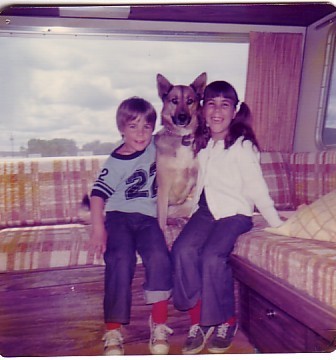Cat-Ching: Careers for Cat Lovers
Share
 Are you eager to spend more time with cats? If the answer is yes, you have something in common with online cat boutique owner Esra Gulenc of Houston, Texas. Back in 2003, Gulenc’s job meant 40 hours a week away from black medium-hair Supercat and tabby Alexander the Great. She wanted more quality time with the kitties, but also needed to earn a living. Gulenc decided to use her passion for cats, as well as their paraphernalia, to create an online store tailored to felines.
Are you eager to spend more time with cats? If the answer is yes, you have something in common with online cat boutique owner Esra Gulenc of Houston, Texas. Back in 2003, Gulenc’s job meant 40 hours a week away from black medium-hair Supercat and tabby Alexander the Great. She wanted more quality time with the kitties, but also needed to earn a living. Gulenc decided to use her passion for cats, as well as their paraphernalia, to create an online store tailored to felines.
Today, Felinerina both pays Gulenc’s rent (for her home and two separate offices) and lets her indulge in an almost daily, worldwide search for unique kitty booty. “I do what I love, but to make sure I had a chance at being successful, I did my research and found my niche,” she explains. The success was not overnight. It took a year and a half for Gulenc to turn a profit. It was worth it for the ultimate payoff: “My cats can come to work with me!”
Gulenc is only one cat fancier to turn her passion into profit. Here, other cat-lovers turned cat-professionals offer advice on what it takes to develop cat-ching.
Cat Sitter
Although it requires little capital, becoming a cat sitter is no small commitment. To build a business, you’ll need to be available at times when pet owners leave town. “You’re 24/7, and you’re definitely home for the holidays,” says Jill Weiner, owner of Brooklyn, N.Y.-based A Friend Pet Sitter. “You have to go into it knowing that you’re on a different schedule than the rest of the world.”
Weiner’s work entails 30-minute home visits during which she might clean kitty litter, refresh water and food, play with a cat, or administer medication. It also includes becoming bonded (that is, insured for inadvertent damage to a client’s property), hiring employees, meeting with cat owners interested in her services and marketing her company. “You need social skills and personality,” says Weiner. “You can’t forget that it’s a service industry.”
The National Association of Professional Pet Sitters is the trade organization for pet sitters, providing tools and education to help its members’ businesses. The association also provides certification, although this isn’t necessary to start a cat sitting business.
Cat Behaviorist
Cat behavior consultants work with pet owners and their felines to strengthen those relationships. But they begin, first and foremost, with a curiosity about what makes cats tick. Jackson Galaxy, a cat behavior consultant in Redondo Beach, Calif., explains that an aspiring behaviorist spends a great deal of time observing cats. Galaxy did this by working at shelters for many years and by reading veterinary studies and books on cat behavior. “You start to get ideas as you watch the cats and the reading helps you develop your point of view,” he explains.
If learning in the trenches is not for you, more formal training is available, as well as certification, through the International Association of Animal Behavior Consultants. You can find out about both of these at their websites. Like with pet sitting, marketing is key, as are people skills. The animal may be your client, but it’s their human companion who does the hiring.
Perhaps the most effective way to market yourself is to get to know other cat professionals (veterinarians, groomers, pet store owners, cat sitters) in your area. Call them to set up meet-and-greets at their offices and provide them with your credentials and a list of your services. When their clients need a behaviorist to consult with, your card will be a paw swipe away.
Cat Trainer
You know you’re a born cat trainer when “you eat, sleep and breathe cats,” says Karin McElhatton, a certified animal trainer and owner of Los Angeles-based Studio Animal Services. “You have to be totally happy to spend all your waking moments thinking about how to get cats to do things.”
If that sounds like you, finding a cat trainer who allows you to apprentice is the next step. This is no Donald Trump-style quickie process. A trainer-in-training can apprentice for as many as two years — without pay. “You need to have an alternate means of support while you’re learning,” says McElhatton.
Once the apprenticeship is complete, a cat trainer will most likely work for an animal talent agency — training cats for stage, print, or television and film roles. (It’s rare to be hired privately as a cat trainer, as most owners are not willing to pay someone to train their pet to roll over.) It’s important to note that a cat trainer’s responsibility doesn’t end when he or she leaves work. The trainer is usually responsible for the care, including the housing, of the cats.
While more costly than hands-on education, certification from animal training schools is also available. To learn more, visit the Search 4 Career Colleges website.
The ASPCA
The American Society for the Prevention of Cruelty to Animals is always hiring. The job might entail administrative, marketing, web design or many other types of work. The Society has offices and clinics throughout the country and is in constant need of staff. “There’s no one skill set required to work at the ASPCA,” explains ASPCA senior vice president Gail Buchwald, “but a good starting point is a love of animals and a commitment to animal welfare.”
While employees work with and for felines and canines, volunteers do have the opportunity to work in a cats-only capacity as “cat socializers,” spending time with cats waiting to be adopted. Buchwald points out that “for an animal lover, there is no greater privilege and no career as gratifying as helping animals in need.” For job postings, visit their website.
Cat Groomer
Sure, a cat can bathe itself, but tooth brushing and mat extraction are out of its range. For these procedures, as well as others involving tools and ointments, a visit to the cat groomer is in order. Groomers give baths and blowouts. They comb and brush hair, not to mention cleaning the wax out of kitty ears. Groomers offer valuable advice on how to reduce shedding. They are often the first to identify skin and hair problems in cats.
While pet groomers do not need to be licensed, most earn diplomas from pet grooming schools. These schools offer courses as short as six weeks or as long as one year, depending on how much a student wants to learn about pets and their needs. Equally as important as the course work is “a love of cats,” says Leigh Ann Gray, a cat groomer at AAA Pet Grooming in Sparta, Mich. “Cats that don’t like to be groomed can really freak out, and that can be dangerous. So you need love and patience.” On the upside: “Cats are good listeners! You can carry on a conversation while you bathe them and they are attentive no matter what.” For more information, visit the Pet Groomer website.
Embarking on a cat-centered career — in any area — requires time and effort. But none of the cat careerists above has any regrets. “I got into cat sitting because I couldn’t have a cat in my apartment,” says A Friend Pet Sitter’s Weiner. “Now I have more cats in my life than any single apartment could hold.”







